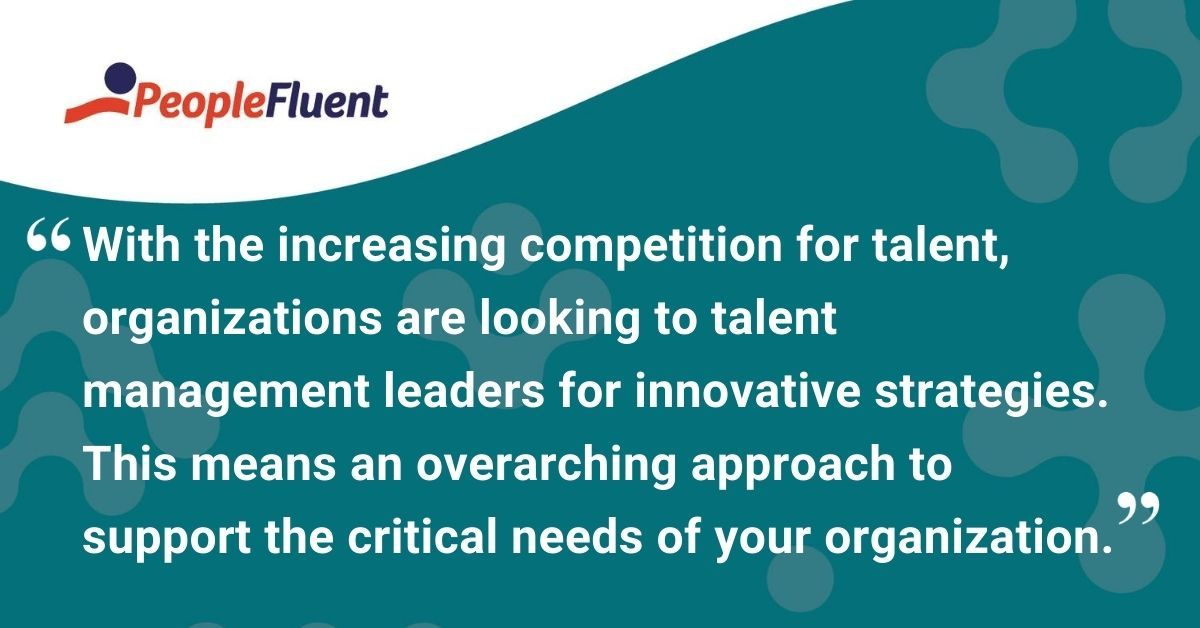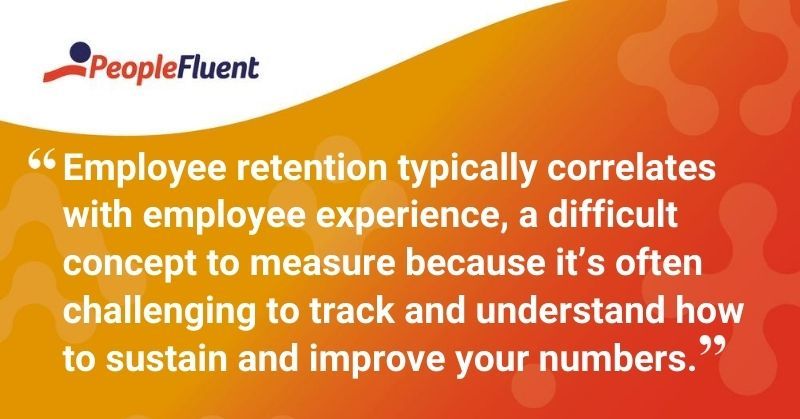Published: Feb 13, 2020Time to read: 6mins Category: Talent Management
4 Innovative Tactics Your Talent Management Strategy Needs
With the increasing competition for talent, organizations are looking to talent management leaders to craft an innovative strategy—an overarching approach to support the critical needs of your organization. We’ve amassed four innovative tactics to help you create a talent management strategy that primes you for success in today’s outcome-driven and employee-focused culture.
Modern management—is it such a new concept, or have we borrowed and built upon past theorists’ ideas? Peter Drucker, described as the founder of modern management, defines it as a ‘multi-purpose organ that manages business and manages managers and manages workers and work.’
In other words, management underpins the web which connects an organization’s people and processes. And over 50 years later, Drucker’s principles remain valuable for any executive. Despite being a relative term, we can define talent management as the art of enhancing business value through a framework that combines tactical human resource planning and interdepartmental collaboration.
With the increasing competition for talent, organizations are looking to talent management leaders for innovative strategies. This means an overarching approach to support the critical needs of your organization. We’ve amassed four innovative tactics to help you create a talent management strategy that primes you for success in today’s outcome-driven and employee-focused culture.
1. Understand Your Organization’s Goals
What you do and how you do it hinges on everything from your organization’s economic realities to its performance expectations. Because these directly inform your talent management strategy, your strategy should encompass business, talent, and development goals.
The demands and responsibilities of HR leaders are growing rapidly to keep pace with business. Talent management leaders often find themselves starting with their own goals and objectives. Unfortunately, this bottom-up planning approach risks misalignment.
Instead, start with the goals of your organization and take a top-down approach. Ask specific questions to better align your HR strategy with the business strategy. These questions could be:
- What is the organization committed to delivering?
- How can people help deliver on that commitment?
- Do you have enough people?
- What kind of skills and experience will people need?
- Which roles are the most critical to fill?

Keep reading: ‘Engineering the Future: Linking Learning and Performance Management to Drive Business Outcomes’
2. Prioritize Employee Needs
Retaining great people is a challenge for many talent management leaders—and that’s not surprising. Because retention typically correlates with employee experience, a difficult concept to measure, it’s often challenging to track and understand how to sustain and improve your numbers.
So, where in your talent management strategy can you infuse facets of a positive employee experience? With your employer brand and, according to a Gartner report, your employee value proposition. You and many others may think, that’s for talent acquisition. While true, these elements influence your current talent, too.
You can build an inspiring employer brand as part of your employee value proposition by creating a genuine, employee-centric culture. Hallmarks of an innovative employee experience include things like talent development programs or employee mentoring that builds trust and fulfills a multigenerational workforce. Be sure to also include career mobility opportunities so employees find purpose in their relevant work, which boosts engagement and professional growth.
Also read: ‘Putting Learning at the Heart of Talent Strategy’
3. Develop a Plan for Your Plan
Wait, what?
It sounds circular, but the idea is to make sure your talent management plan is the right plan. Strategic preparation will take you from intention to desired outcome. Before you dive head first into your talent management strategy, ensure you consider what overarching forces will influence your strategy’s success. Simply put, it's an action plan for your strategy.
By having this action plan in place, you can establish accountability for decisions. Although talent management typically rests on the shoulders of HR, senior leaders in your organization should be active participants in the process. Namely, succession planning and employee development.
Finding opportunities in your challenges can help you focus on what you’re handling right now. Consider how they may present new opportunities rather than allowing these challenges to linger. Identifying problems and addressing them with innovative solutions can improve the success of your strategy and build trust throughout your organization.
This kind of organizational support informs and justifies your talent management strategy. And makes employee retention a company-wide priority. Most importantly, communication should be happening often and transparently to avoid triggering negative perceptions or adversely impacting employee engagement and performance.

4. Familiarize Yourself with Metrics and Analytics
Leadership teams across industries are demanding more data from HR. More visibility into talent management. More data-driven answers to questions about ROI and impact. But insights gleaned from HR data are only as good as the data itself. And raw data isn’t of much value until context and purpose are added.
This is where comprehensive talent analytics come into play, allowing you to shift from information to understanding. Giving you the knowledge your team needs to recognize successful strategies and those you can abandon or need to modify.
Some of the most meaningful metrics include new growth vs. attrition rates, quality of hires, employee performance and productivity, and employee satisfaction ratings. The metrics you select should speak to key areas of your talent management strategy and to the information needs of your leadership team.
Adaptability is as much a part of life as change. And the metrics you and your team use will fluctuate based on talent management trends, industry changes, and your talent pool. A consistent measure-learn-revise routine helps you maintain a competitive talent management strategy.
Solidify a Talent Management Strategy That Succeeds
To make a difference in your organization, HR managers need a strategy that works, and robust talent analytics to monitor true business impacts.
With a solid, strategic framework, your HR team can reach its goals for employee development, employee retention, and every effort between.
To learn more about innovative tactics for your talent management strategy, access a recording of the ‘HR Happy Hour Podcast’ by PeopleFluent Managing Director, Stephen Bruce.
Discover How Performance Software Helps Build a Culture of Support
Guide people on a path of continuous improvement, excellence, and achievement. PeopleFluent helps you support your people, so they exceed their goals and drive business outcomes.